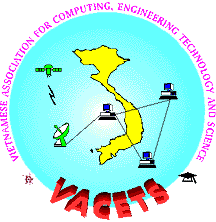Unlike anh
Duc's [SCIENCE FOR EVERYONE],
I decided not to broadcast anything last week. The competition was just
too great. Perhaps I am too simple minded, but I am always amused by people
who can build a mountain out of a mole hill.
Since 1983,
automobile traffic has grown four percent annually. Americans now drive
an estimated two trillion miles each year. Traffic congestion costs about
$46 billion annually, mostly in lost productivity. An emerging global industry,
the intelligent vehicle highway systems (IVHS) technology, is on its way
to solve this problem and more.
By deploying
computer, communications, and sensing technologies, IVHS promises to transform
collections of passive thoroughfares into smart, responsive systems adept
to control commuter patterns, to respond swiftly to medical emergencies,
to manage interstate commercial trucking, to make public transportation
more efficient, and to help motorists drive better. Smart cars and smart
highways have the promise of improving transportation efficiency, increasing
safety and mobility, and slashing the economic, environmental, and human
costs of travel.
IVHS is a
complex industry divided into many interrelated components:
1. Advanced
Traffic Management Systems (ATMS) gather and report traffic information,
control traffic movement, and relieve congestion by instructing cars to
use different routes and by managing signals and lanes.
2. Advanced
Traveler Information Systems (ATIS) provide real-time information to help
users plan their trips. Automatic route guidance display maps and roadways,
interpret traffic information broadcasts, and issue travel warnings.
3. Advanced
Vehicle Control Systems (AVCS) technologies in car and on the road will
help motorists drive better. Adaptive cruise control slows a car down when
it gets too close to the car in front of it, or sensors on the road keep
the car in its lane.
4. Advanced
Public Transportation Systems (APTS) technologies make public transportation
more attractive and cost-effective by managing the fleet and dispatch operations.
5. Commercial
Vehicle Operations (CVO) promise to save significant time and money by
automating toll collection, permit acquisition, and vehicle weighing.
6. Advanced
Rural Transportation Systems (ARTS) include automatic emergency signaling,
route guidance, and automatic vehicle location.
IVHS technologies
rely on geographic digital data bases (maps) to describe and control the
roadway network. These data bases must be accurate and comprehensive. Considerable
efforts are put into generating these digital maps. Geographic Information
Systems (GIS) play a major roles in these efforts.
Within the
next 5 years, stand-alone products such as automatic route guidance, automatic
vehicle location, and automatic vehicle identification will be available.
When that happens, the world's most popular excuse of being late to work
will be eliminated.
Viet-Dung
Hoang, Ph.D.
[email protected]
For
discussion on this column, join [email protected]
Copyright
© 1994 - 1997 by VACETS and Viet-Dung Hoang
:
